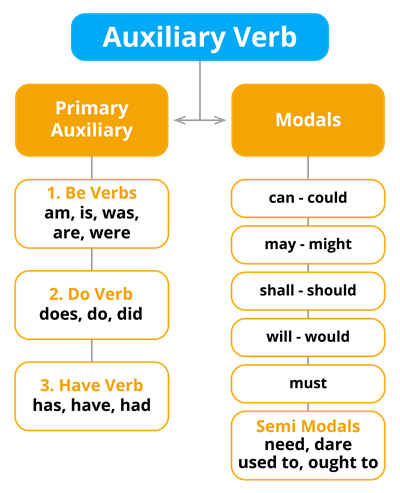PDF chapter test TRY NOW
A modal verb indicates modality (that expresses a speaker’s general intention), i.e. likelihood, ability, permission, request, capacity, suggestions, order, obligation, advice etc. We use modals to show if we believe something is certain, probable or possible.
To know what a modal verb is, one must understand the functionality of auxiliary verbs, as modal verbs are also called modal auxiliary verbs.
An auxiliary verb is a combination of the Primary auxiliary and the modals.

An Auxiliary verb is a helping verb used with a main verb to form a verb phrase. It indicates the main verb'stense, mood and grammatical aspects.
Example:
1. Yes, I have a pen.
2. I am speaking to you now.
3. No. I did not do that.
Modals are also known as modal auxiliary verbs. Modal Verbs are verbs that help the main verb to express one of the following:
Ability
Possibility/probability
Instruction
Permission
Obligation
Requests
Offer
Advice
Some of the Primary auxiliary sentences from the lesson "Tech Bloomers":
- I didn’t think I could do anything like that.
- Your entire water and energy management can be taken care of by automating all the activities.
- Your refrigerator can directly link to the e-commerce site and order milk if it is about to be exhausted.
- May be it means you can keep in touch with your family and talk to and even see relatives who live far away.
- But it would have been frustrating and challenging.
